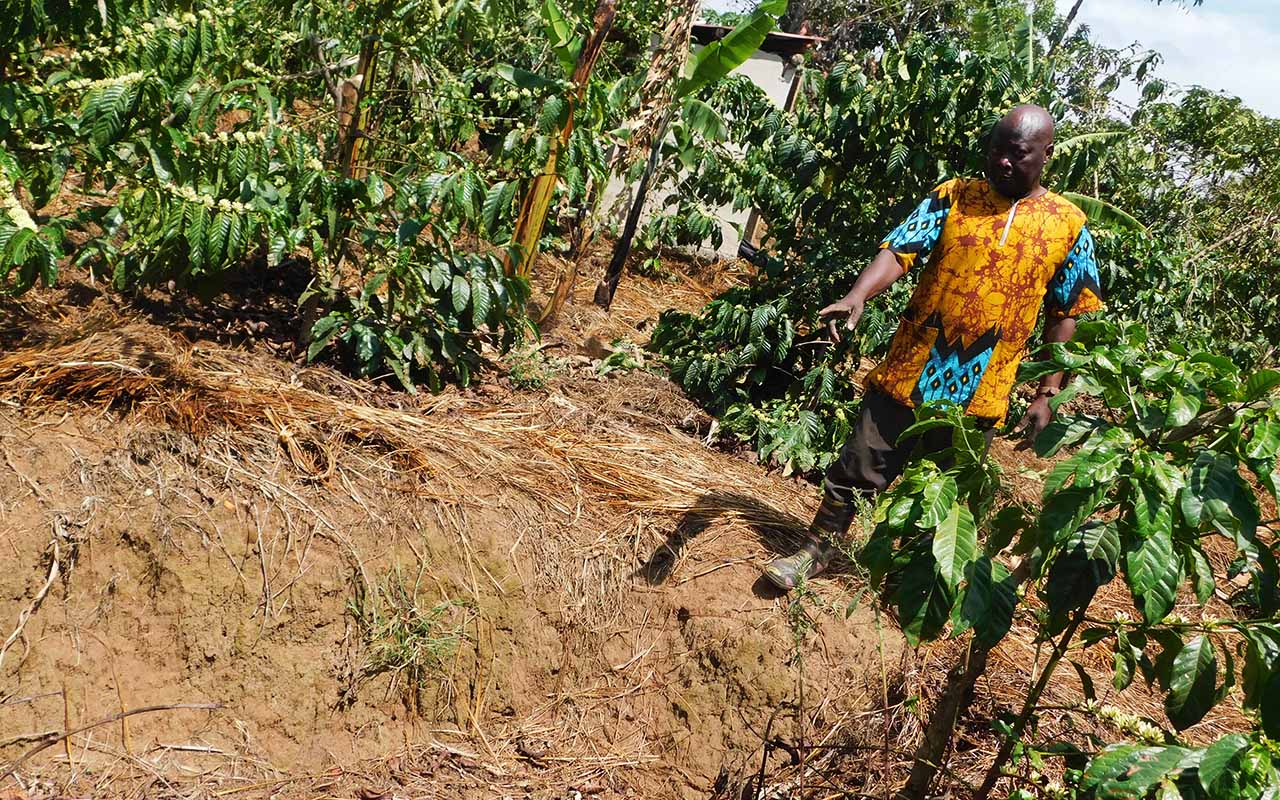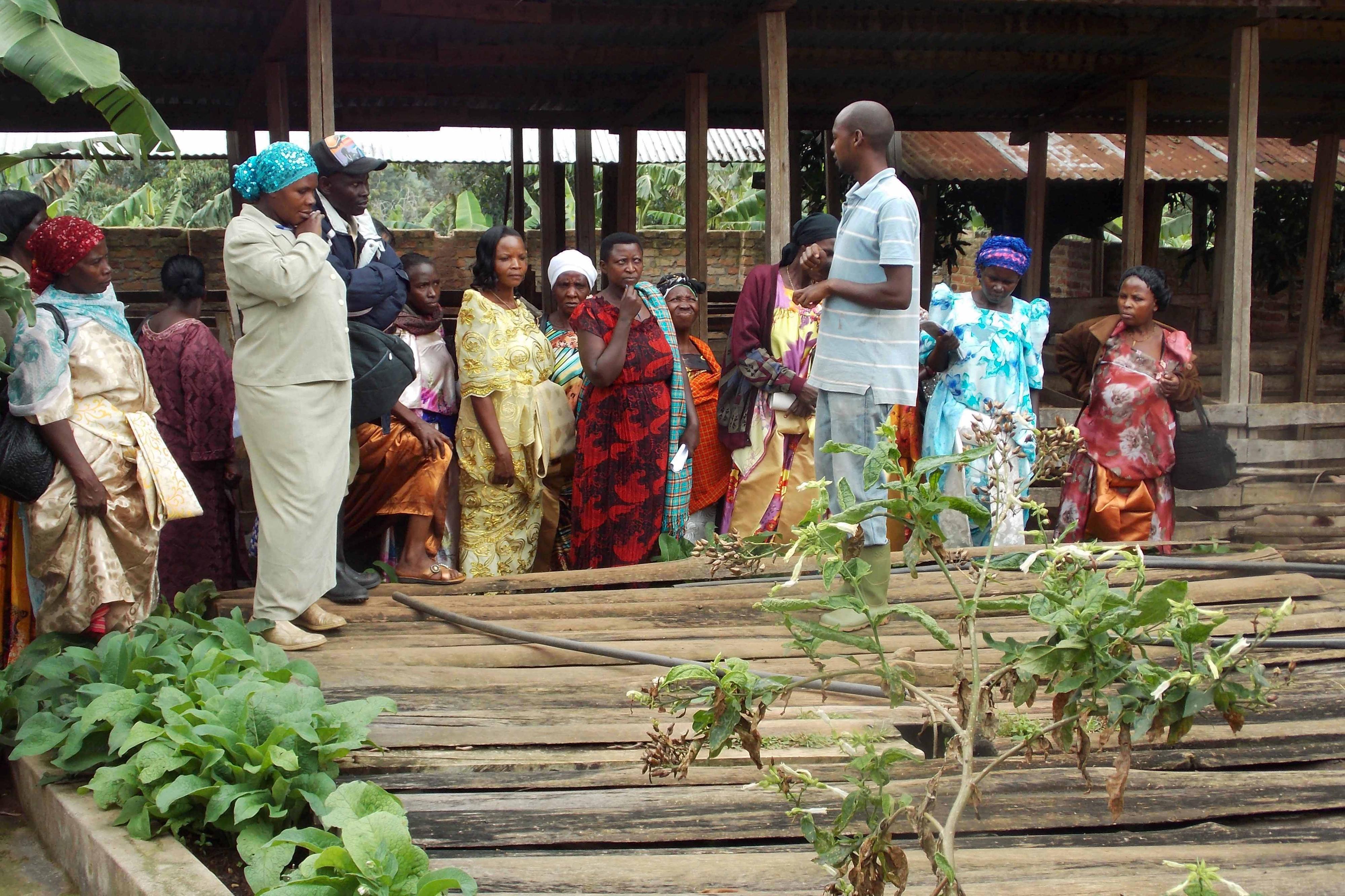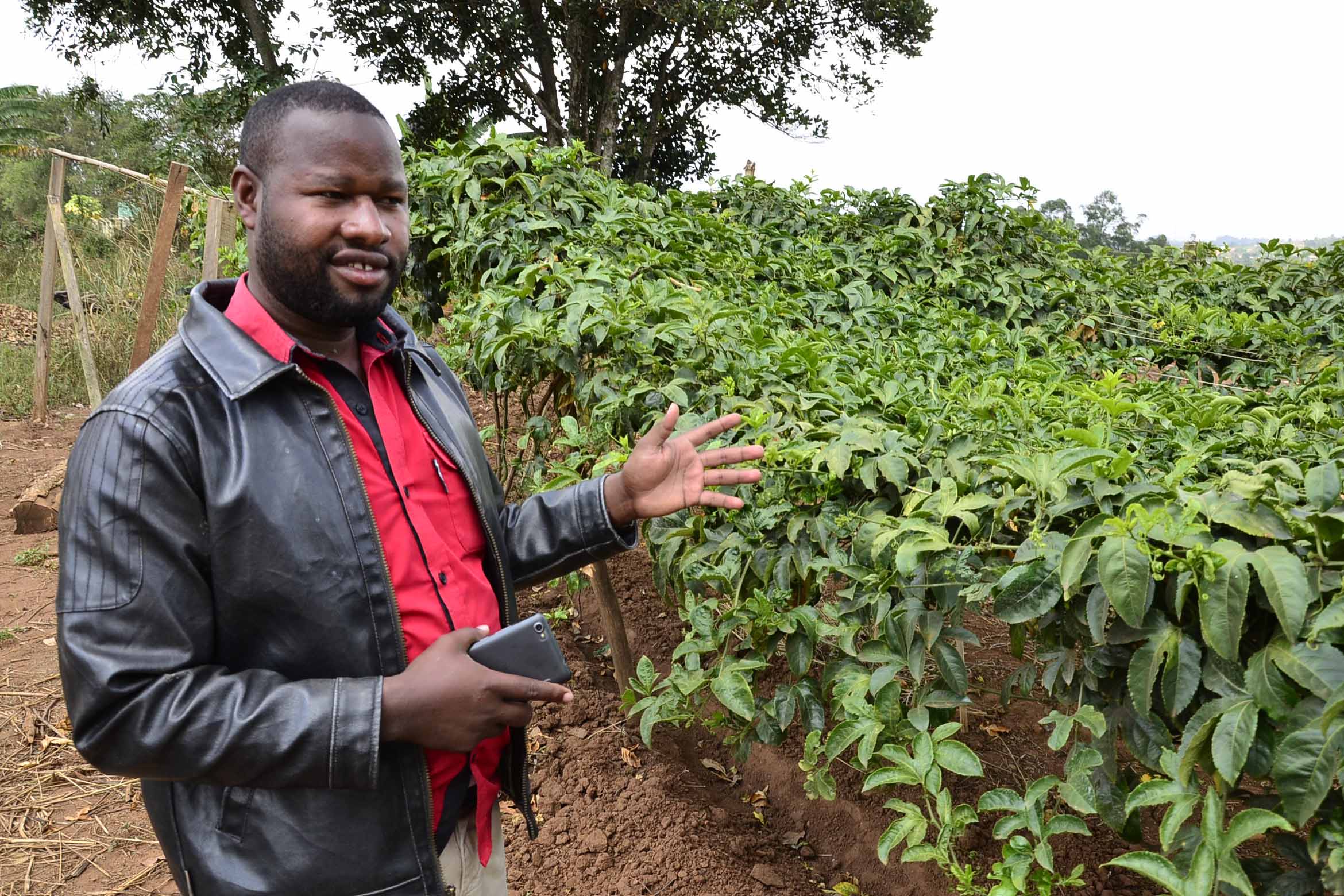Prime
What a farmer must do in the ongoing rainy season

A farmer has dug trenches in his garden to bring in run-off rainwater from the nearby footpath. PHOTOs/ Michael J Ssali.
What you need to know:
- The rainy season should be the time for farmers to be conscious of soil erosion by surface runoff and how it can be mitigated. The amount of water that flows on the ground when it rains depends very much on the vegetative cover of the surface on which the rain falls.
Current meteorological forecasts indicate that the main rainy season begins around this time (mid-March) and that it is likely to end in May.
We have had more than the usual amount of rain that we used to get in the past many years. It is also true that a lot of districts in Uganda have been getting downpours since September last year and they have not had the short drought period that normally occurs between January and March.
There are farmers in some districts who planted crops such as maize, groundnuts, and coffee as early as February this year despite repeated warning by agricultural experts that it was not the best time for planting, particularly for farmers doing rain fed agriculture. In today’s times of climate change it is not really easy to go by the traditional weather patterns.
Planting
Lwengo District Principal Agriculture Officer, Peter Bamwesigye says mid-March is just about the best time for farmers to begin planting. “Around this time when we still have the Nitrogen flush it is the time in which planting should take place,” he says. “It is important that people plant early when the rains are just beginning. And they should go for early maturing seed varieties since it is likely that the rains may stop around the end of May.”
He goes ahead to say that when the rain season begins it usually arrives with pests which the farmer must fight. He is however quick to point out that early planting minimises pest attack.

A farmer, Gerald Sendaula inspects his climbing beans. Photo/ Michael J Ssali.
How to fight pests
Fighting pests takes many forms. Some people use pesticides but care must be taken to apply them according to manufacturers’ instructions and by consulting area agricultural extension officers for guidelines on pesticides application.
Bamwesigye also advises farmers to fight weeds effectively. “If weeds are left to grow freely in the garden they use up soil nutrients, competing with the planted crops which may lead to their stunting and reduced yields,” he said.
Plan early for weeding
Some people uproot weeds by hand or with the use of a hand hoe but many others use selective herbicides which must be handled with care and according to manufacturers’ instructions. Bamwesigye goes on to say ahead to say that fertiliser application should take place early enough for the crops to grow with vigour and to come up with good yields.
Planting crops soon after ground preparation makes it possible for the crop seeds to germinate quickly before most weed seeds emerge from the ground and by the time the weeds begin to grow the farmed crops will be too big for the weeds to out-compete them for soil nutrients and sunlight.
Planting coffee
Shaffic Ssenyimba, Masaka Regional Coffee Extension Officer, Uganda Coffee Development Authority (UCDA), says the best time to plant coffee is at the beginning of the rainy season.
“Coffee is a crop that requires a lot of moisture in the soil for the initial roots to spread well,” he says.
“All farmers should go to the approved coffee nurseries for good planting material and take advantage of the heavy rains. This is also the time for putting manure on the crop so that the rainwater takes the nutrients to the deepest end of the coffee tree roots.”

A farmer uses rainwater to irrigate vegetables. Photo/Michael J Ssali.
Water harvesting
Joseph Kasekende, agriculture officer in Rakai District, says the ongoing rains should be used by the farmers to store water for future use when drought strikes. “They should take interest in the new micro-irrigation innovations that have been introduced by the government,” he says.
“The technologies may be used to pump water from swamps and rivers but for the majority of the people rainwater harvesting must be the solution. The farmers should construct water reservoirs in their farms with the use of concrete, tarpaulin, or plastic. This is water that they may use for irrigation and watering their livestock when the rains are no more after the month of May.
Valuable amounts of rain water can be collected from house roofs. Not all our farmers, however, live next to a natural water source to turn to when the dry season begins.”
Dig trenches
Kasekende also mentions the digging of trenches across the slopes of the farms. He says the trenches act as traps for the runoff water and make it sink into the soil. “The runoff water often carries soil nutrients and soil. Therefore when the farmer makes the trenches the nutrients get trapped with the water and they are all taken deep into the soil.”
Some people trap rain water running on the road sides and lead it into their gardens through trenches.
He also emphasised the importance of mulching in mitigating soil erosion. He says when the rain falls on a covered surface the chances of soil erosion are quite minimal. The rainy season should be the time for farmers to be conscious of soil erosion by surface runoff and how it can be mitigated.
The amount of water that flows on the ground when it rains depends very much on the vegetative cover of the surface on which the rain falls. If the coffee garden or the banana garden are covered with dry leaves or with short grass there may not be much soil erosion.
Kasekende also advises farmers to make good selection of the seeds to plant during this rain season. “They should buy early maturing seed varieties so that in case the rains turn out to be short lived the crops will be mature and ready for harvest. Some improved seed varieties are bred to tolerate rain scarcity conditions,” he says.
Winfred Nakyagaba Sserwanga, crop agronomist at Mukono Zonal Agricultural Research Development Institute (MUZARDI) Kamenyamiggo Satellite, says, “Whenever you see rainwater running on the ground, it is carrying what we call topsoil which is rich in humus and other soil nutrients, including microorganisms. So when a farmer digs a trench that taps runoff from the roadside and leads it to his garden he increases the fertility of the soil apart from adding water for supporting crop growth during times of rain scarcity.”
Gapping
The rainy season should also be the time for gapping. When planting is done we expect that the seeds or seedlings begin to grow well.
However there are always some seeds and plantlets that actually die or get damaged by pests.
The farmer therefore must regularly inspect his farm during the rainy season and fill in the gaps by planting new seeds and plantlets to replace the missing ones. This is an effort to ensure that expected productivity is achieved.
This might not be applicable for annual crops which require uniform growth rate but it is quite applicable for crops like coffee when thieves uproot and steal plantlets from the garden or when the plantlets dry up.
Pruning is another activity that farmers must pay attention to during the rainy season. This is the season when crops will develop a lot of unproductive parts (shoots). Not all those twigs or branches will produce the desired fruits or seeds.
The farmer has to remove some of the perceived unproductive branches and twigs in order to achieve high crop yields. In the case of grain like maize the farmer will remove some of the excessive plants in each hole.
These normally come about by mistake --- like if too many seeds accidentally got planted in a single hole. The farmer must have a standard number of plants growing in each hole.




